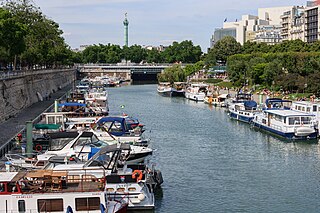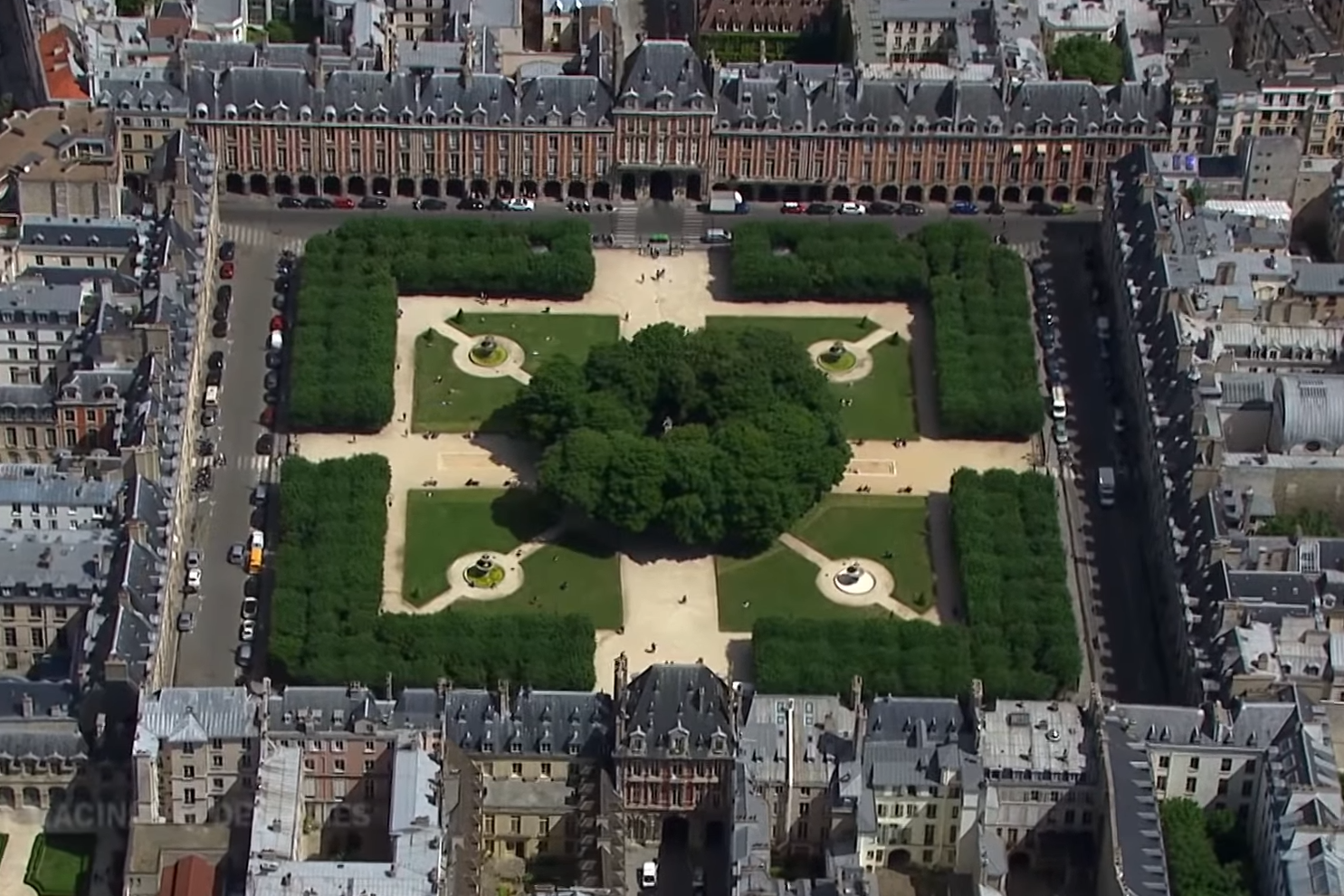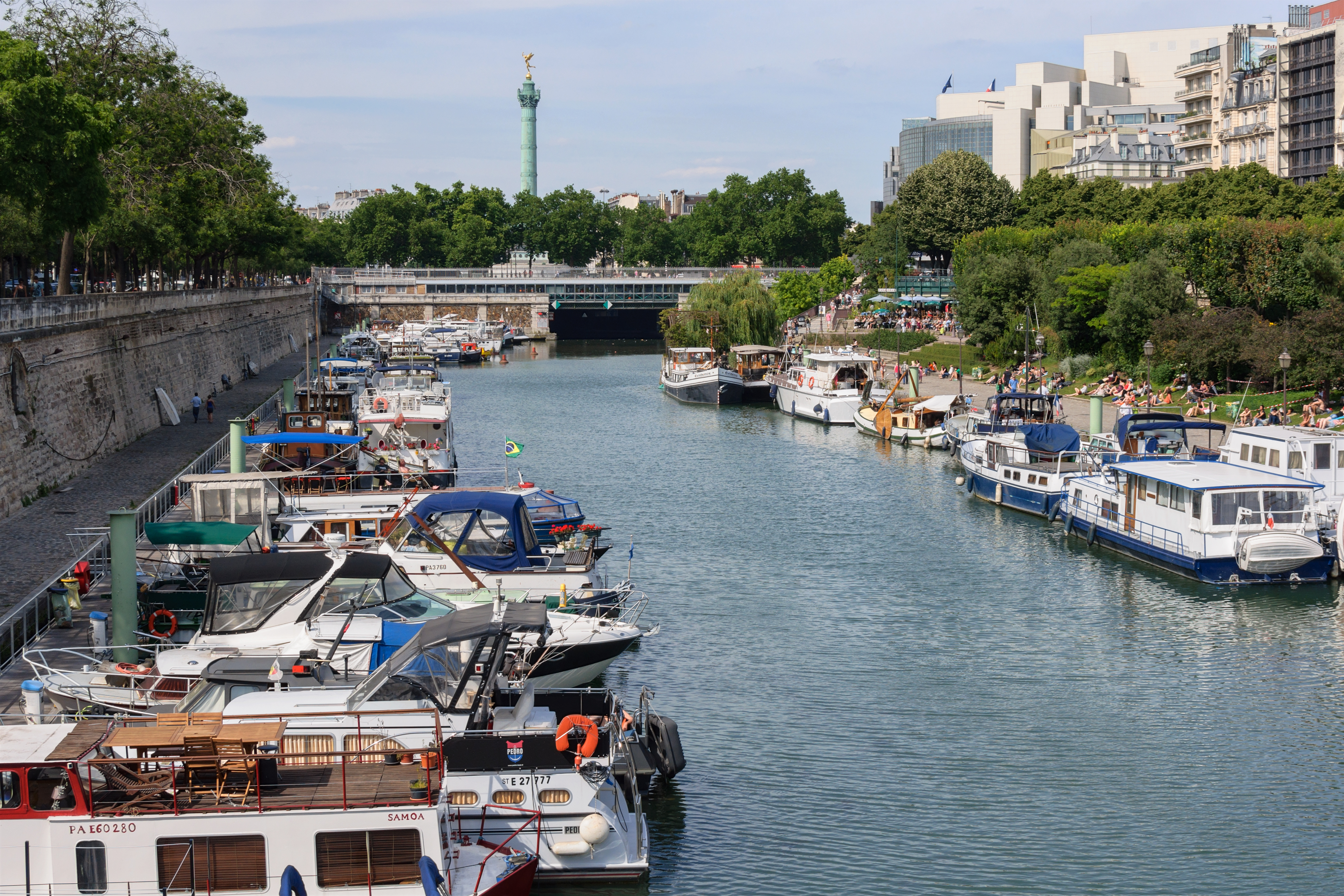Visit Paris in 2 days
20 must-see POIs, optimized routes and anecdotes.
Loading map...
You will visit the most beautiful points of interest in Paris


















Paris — 2 Days of Iconic Sights
Two days to fall in love with Paris through 18 iconic places. A fast, soulful route blends grand landmarks and hidden gems.
You will see the Paris Courthouse, Hôtel de Bourvallais and Ministry of Justice. Stroll past the Grand Palais, Pont Neuf and Louvre Pyramid. Explore gardens and parks, historic churches, mausoleums and atmospheric burial places.
- Landmarks: Louvre, Grand Palais, Pont Neuf
- Cultural and historic: Courthouse, Ministry of Justice, Hôtel de Bourvallais
- Green and sacred: gardens, churches, mausoleums
Feel centuries of art, faith and civic life in every square. Ready to explore Paris on a compact cultural route? Read the full guide now.
Day 1 - Paris
10 POIs to discoverDay 1 - Morning à Paris
5 Points of interest - Duration : 3h45 - Distance : 2.2 km - Walking : 0h28Luxor Obelisk
- The obelisk comes from the Temple of Amun in Luxor, Egypt, and was erected in Paris in 1836.
- It is the oldest monument in Paris, predating the founding of the capital.
- It was transported from Egypt to France aboard the ship Luxor, built especially for the occasion.
- The obelisk is 23 meters high and weighs 222 tons, with a pedestal weighing 240 tons.
- It is made of syenite, a pink rock from Aswan, Egypt.
- The obelisk's pedestal is made of five blocks of pink granite from Brittany.
- The obelisk is made of pink granite from Brittany.

Alexandre III Bridge
- This steel-arched bridge crosses the Seine and links the esplanade des Invalides and avenue Winston-Churchill, where the Petit Palais and Grand Palais are located.
- It is named after the Russian Tsar Alexander III.
- It was built between 1896 and 1900 in the Beaux-Arts style with Art Nouveau lamps, cherubs, nymphs and winged horses.
- It was inaugurated in 1900 for the Paris Universal Exhibition.
Marly's horses
- These 2 sculptures represent rearing horses struggling with their grooms, expressing the struggle of wild forces.
- They were sculpted in Carrara marble in 1745 by Guillaume Coustou.
- They were commissioned by Louis XV to adorn the Marly trough, at the entrance to the chateau park.
- In 1794, the sculptures were moved here, to the Place de la Concorde.
- In 1984, copies in reconstituted marble were installed.
- The originals are preserved in the Louvre Museum. .

Tuileries Gardens
- This is the oldest and largest garden in Paris.
- It was created in the 16th century by Catherine de Médicis as an Italian-style garden to escape the stressful atmosphere of the Louvre.
- Some of the garden's trees even date back to the 1st Empire.
- The Jardin des Tuileries is an open-air museum with remarkable sculptures signed by renowned artists such as Rodin, Millet, Levesque and Waldeck-Rousseau.
- The garden is also home to the Musée de l'Orangerie and the Musée du Jeu de Paume.
- The Jardin des Tuileries carousel offers musical rides on wooden horses and ostriches.
- Don't miss the sailboats you can sail in the garden's octagonal basin.

Place Vendôme
- Place Vendôme is one of the city's five royal squares, along with Place des Victoires, Place de la Concorde, Place des Vosges and Place Dauphine.
- It was created in 1686 and has been renamed several times over the years.
- At the center of the square is the Vendôme column, erected in 1810, destroyed by the population during the 1871 revolts and subsequently rebuilt.
- Before being associated with jewelry, the Place Vendôme was a central location for Parisian elegance, home to numerous couturiers and milliners.
- On the square, the Hôtel de Bourvallais houses the Ministry of Justice.
- The square is located just north of the magnificent Jardin des Tuileries.
Day 1 - Afternoon à Paris
5 Points of interest - Duration : 3h45 - Distance : 5 km - Walking : 1h06
Town hall of the 7th arrondissement of Paris
- The City Hall of the 7th arrondissement of Paris is the seat of local government.
- It is housed in a historic building that reflects Parisian architecture.
- Here local affairs are managed and service is provided to residents.
- The 7th arrondissement is known for housing iconic monuments of Paris.

Square Georges-Cain
- Georges Cain was a French painter, illustrator and writer.
- In the center of the garden is a bronze statue of Aristide Maillol, French painter, engraver and sculptor.
- The square also houses a lapidary museum with archaeological finds and historical relics of Paris.
- The square is planted with many species, including a fig tree over 6 meters high.
- In addition to the statue of Aristide Maillol, the square is home to a sound creation called "Le Rossignol de Heinz", powered by solar collectors.

Archives nationales
- The National Archives were created in 1790 and preserve a total of 373 linear km of archives, covering the history of France since the 7th century.
- Contains the archives of most of the central agencies of the French state.
- The Ministries of Defense, Economy and Finance, and Foreign Affairs have had their own archival services since the 18th century.
- Documents held in the National Archives can be consulted and reused free of charge.

Place des Vosges
- This is the oldest square in Paris, known by various names such as Place Royale and Place de la République.
- It owes its name to the Vosges department, the first to pay taxes during the French Revolution.
- It has been home to many political, artistic and media personalities.
- Along with the Place des Victoires, the Place Dauphine, the Place Vendôme and the Place de la Concorde, it is one of the five royal squares in Paris.
- In the center of the square is the Square Louis-XIII, adorned with four fountains.

Bassin de l'Arsenal
- The Bassin de l'Arsenal, also known as the Port de l'Arsenal, is a boat basin.
- It links the Canal Saint-Martin to the Seine and is part of the Réseau des Canaux Parisiens (Parisian Canal Network).
- An arsenal existed at this location from the 16th to 19th centuries, which is where the basin gets its name.
- After the Bastille fortress was destroyed in 1789, the Bassin de l'Arsenal was excavated to replace the fortress's ditch.
- The Bassin de l'Arsenal was a commercial port during the 19th and 20th centuries, until it was converted into a leisure port in 1983.
- It is currently a marina for about 180 pleasure boats and is part of France's national Navigable Waterways system (Voies navigables de France).
Day 2 - Paris
10 POIs to discoverDay 2 - Morning à Paris
5 Points of interest - Duration : 3h45 - Distance : 1.6 km - Walking : 0h20
Paris-Sorbonne University
- Paris-Sorbonne was founded in 1971 as a university specializing in the humanities, arts and social sciences.
- Heir to a centuries-old humanist custom, it is a university of letters and humanities of international renown.
- Along with the universities of Oxford, Bologna and Salamanca, it is one of the oldest and most prestigious universities in the world.
- It was founded in 1257 by Robert de Sorbon and reformed in its entirety by Cardinal Richelieu. Among its famous professors and students are Pierre and Marie Curie, Jean-Paul Sartre, Simone de Beauvoir, René Descartes, Louis Pasteur, Lavoisier, Pierre Paulet, Victor Hugo, St.
- Ignatius of Loyola and St.
- John Baptist de La Salle and Armando Uribe among many others.
- In 2010, it established partnerships with other institutions to form the Sorbonne Universités group.
Samuel-Paty Park
- Place Samuel-Paty is home to several sculptures, including a monument to Puvis de Chavannes, another to Octave Gréard, a statue of Montaigne and the Capitoline She-Wolf.
- The statue of Montaigne became famous among students at the Sorbonne, who believed that touching his right shoe would bring good luck in exams.A French painter.
- Puvis de Chavannes was a French painter, considered a forerunner of symbolism.
- Octave Gréard was a French pedagogue and academic.

Astronomy tower of the Sorbonne
- The Sorbonne Observatory is a former astronomical observatory.
- The observatory is located on the rooftop of the Sorbonne.
- It houses an observational telescope belonging to the Société astronomique de France (SAF) and public observations are organized there.

Jardin du Luxembourg
- The Luxembourg Garden is a public garden created in 1612 at the request of Marie de Medici and now belonging to the Senate.
- Its name is inspired by the former mansion of the Hôtel de Luxembourg.
- It houses the Palais du Luxembourg, seat of the French Senate, and the Petit Luxembourg.
- The Petit Luxembourg or Hôtel de la Présidence has been the residence of the President of the French Senate since 1825.
- It is adjacent to the Luxembourg Palace.
- In 2022, the garden was listed as the most beautiful in Europe and the third most beautiful in the world.

Panthéon
- The Pantheon is a neoclassical mausoleum located on Mont Sainte-Geneviève, which has become the burial place of great French personalities.
- Its architecture (from 1758), as well as its name, is inspired by the Pantheon in Rome, which was a monument dedicated to the veneration of the gods and was reused as the tomb of illustrious personalities.
- Pantheon's architecture mixes different styles, including Gothic, Byzantine, Classical and Greco-Roman. Among those buried in the Pantheon are Voltaire, Rousseau, Victor Hugo, Émile Zola, Jean Jaurès, Jean Moulin, Louis Braille, Jean Monnet, Sadi Carnot, Pierre and Marie Curie, André Malraux and Soufflot, its architect.
- In 1851 Léon Foucault installed his famous pendulum in the Pantheon because the great height of the building facilitated the experiment.
- Through this experiment he succeeded in demonstrating the rotation of the Earth and the existence of the Coriolis force.
- A replica of the pendulum has been installed in the Pantheon since 1995.
Day 2 - Afternoon à Paris
5 Points of interest - Duration : 3h45 - Distance : 2 km - Walking : 0h26
Louvre Pyramid
- It houses the main entrance to the Louvre Museum and was inaugurated in 1988 by François Mitterrand, then President of the French Republic.
- The metal structure supporting the glass cladding is made of steel and aluminum and weighs 200 tons.
- It was designed by architect Ieoh Ming Pei and is the first major construction to use laminated glass.
- When the project was presented in 1984, the press described it as "the zero degree of architecture", a "funnel", "something out of Disneyland" or a "Luna Park" and out of the classical context of the Louvre.
- Today, many appreciate the contrasting juxtaposition of architectural styles and the fusion of the classical with the contemporary.
- It is surrounded by three smaller replicas that constitute skylights and a fifth inverted pyramid built beneath the Louvre's Carrousel.

Saint-Germain-l'Auxerrois church
- The church has Merovingian origins, and its current name appears in the 11th century.
- It is linked to the Louvre Palace, residence of the kings of France, and is called the "parish of the kings of France".
- It was rebuilt several times, with work carried out in stages over a period of almost three hundred years.
- It was embellished with sculptures, paintings and objects of worship, but most disappeared during the French Revolution.

Quai de l'Horloge
- The quay takes its name from the clock that adorns the tower of the Palais de la Cité.
- Construction work on the quay began in 1580 and was completed in 1611.
- Over the centuries, it has been given various names, such as "Quai des Grand-Cours-d'Eau", "Quai des Morfondus" and "Quai du Nord".
- Quai de l'Horloge houses the Conciergerie, which includes Gothic rooms, as well as the Court of Cassation.
- It is also lined by other notable buildings, such as the Hôtel de Harlay and former optician's workshops.

Louvre Museum
- Inaugurated in 1793, the Louvre is one of the three largest art museums in the world, along with the Hermitage Museum and the National Museum of China.
- The museum houses more than 500,000 works, including La Joconde, the Venus de Milo and the Code of Hammurabi.
- The Louvre Palace, which houses the museum, is a former royal residence.
- The museum is recognizable by the glass pyramid in its reception hall, erected in 1989.
- The Louvre Museum, which houses the museum, is a former royal residence.

Saint-Eustache Church
- Saint-Eustache church has existed since the early XIIIᵉ century, the first building constructed was a chapel dedicated to Saint Agnes.
- The current version of 'church was built between 1532 and 1633.
- Saint Eustache de Macon was a Roman general who converted to Christianity.
- It features his symbols, such as the intertwined letters S and E, a hunting horn and a stag bearing a cross between its antlers.
- King François 1ᵉʳ, who was behind the project, wanted to build an edifice capable of rivaling Notre-Dame cathedral in Paris.
- Saint-Eustache church has been the site of numerous baptisms, weddings and burials of great personalities.
- For example, Molière and Madame de Pompadour were baptized here.
- Others are buried here, such as Jean de la Fontaine and Mozart's mother.
Celebrate the vibrant discoveries completed over these two days. Memories feel magique, inoubliable, and truly authentique. Découvrez moments, visitez lieux, explorez ambiances, parcourez quartiers. Each stop revealed unexpected layers of city life. Observation skills and curiosity matured with every hour. This itinéraire fostered growth and expanded curiosity.
- Magique interplay of light and shadow.
- An inoubliable blend of art and life.
- Authentique encounters with local rhythms.
- Exclusif glimpses into hidden corners.
Your perspective has shifted toward bolder cultural curiosity. Explore deeper, visitez untold places, parcourez wider streets. Découvrez new neighborhoods, visitez fresh venues, explorez hidden paths. Crave more magique and exclusif discoveries ahead. Make room for slow moments and small discoveries. Pack a sense of wonder and exclusif expectations. This journey was transformative, authentique and empowering. Continue the adventure now and découvrez more today.
Want more adventure?
Discover our urban escape games to transform your visit into an interactive adventure!






















